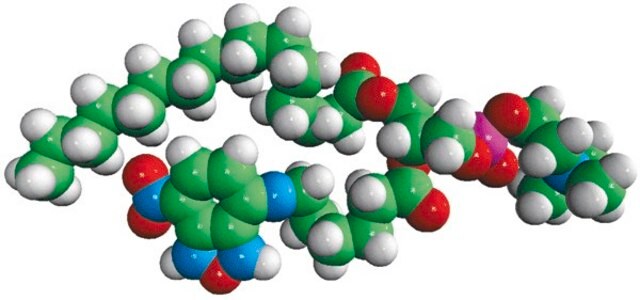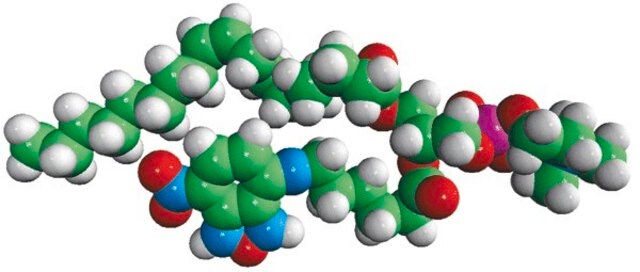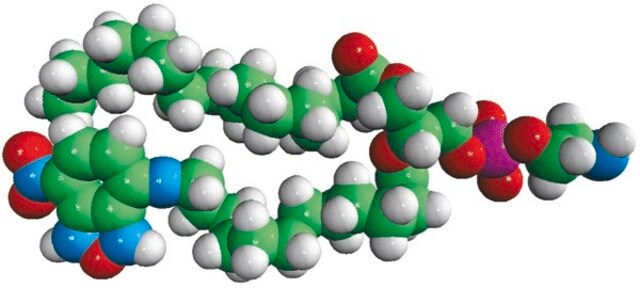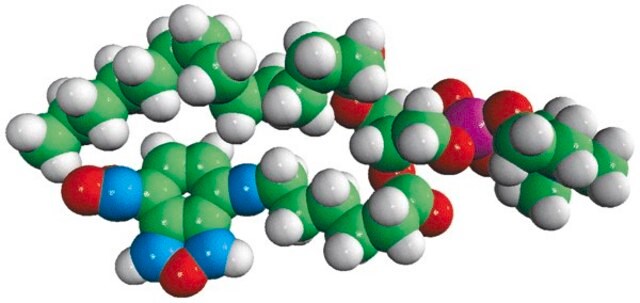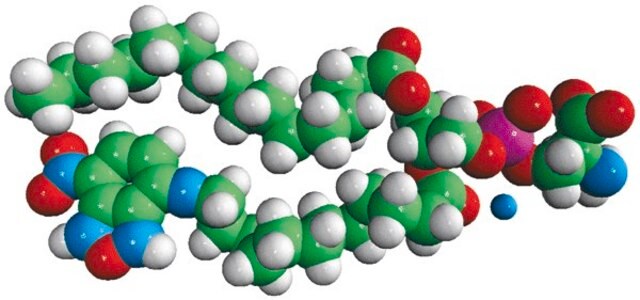810131P
Avanti
16:0-12:0 NBD PC
Avanti Research™ - A Croda Brand 810131P, powder
Sinonimo/i:
1-palmitoyl-2-{12-[(7-nitro-2-1,3-benzoxadiazol-4-yl)amino]dodecanoyl}-sn-glycero-3-phosphocholine
About This Item
Prodotti consigliati
Saggio
>99% (TLC)
Forma fisica
powder
Confezionamento
pkg of 1 × 1 mg (810131P-1mg)
pkg of 5 × 1 mg (810131P-5mg)
pkg of 5 × 2 mg (810131P-10mg)
Produttore/marchio commerciale
Avanti Research™ - A Croda Brand 810131P
Tipo di lipide
fluorescent lipids
phospholipids
Condizioni di spedizione
dry ice
Temperatura di conservazione
−20°C
Categorie correlate
Descrizione generale
Applicazioni
- in the microfluidic chip-based technology to demonstrate separation of fluorophore-labeled phospholipids and to monitor enzyme activities of lipid-modifying enzymes
- as a fluorophore for 1,2-dipalmitoyl-sn-glycero-3-phosphocholine (DPPC) in fluorescence recovery experiments
- as a substrate to test scramblase activity
Azioni biochim/fisiol
Confezionamento
Note legali
Codice della classe di stoccaggio
11 - Combustible Solids
Certificati d'analisi (COA)
Cerca il Certificati d'analisi (COA) digitando il numero di lotto/batch corrispondente. I numeri di lotto o di batch sono stampati sull'etichetta dei prodotti dopo la parola ‘Lotto’ o ‘Batch’.
Possiedi già questo prodotto?
I documenti relativi ai prodotti acquistati recentemente sono disponibili nell’Archivio dei documenti.
Il team dei nostri ricercatori vanta grande esperienza in tutte le aree della ricerca quali Life Science, scienza dei materiali, sintesi chimica, cromatografia, discipline analitiche, ecc..
Contatta l'Assistenza Tecnica.
